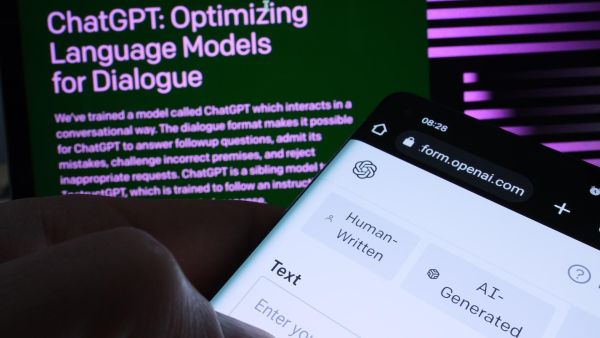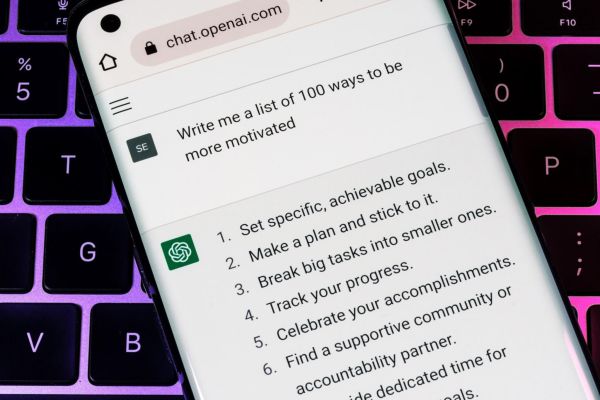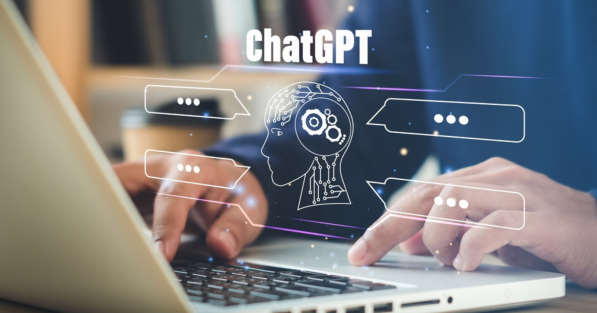Introduction
ChatGPT has an almost endless list of fascinating use cases for businesses. Since its launch in November 2022, it has been asked hundreds of millions of questions by users – many of whom are leveraging it at work – while an array of other AI tools have also been called upon. The chatbot becomes much more valuable if you use what’s called a ChatGPT prompt to inspire its responses. We’re here to explain exactly what that is and highlight the best ChatGPT prompts around.
In summary, a ChatGPT prompt is a text input written in a certain way and designed to generate a specific, useful response from the AI software. Prompts are especially good at helping you complete tasks, which makes them highly relevant to the workplace.
Be Clear and Specific
The more precise your question, the better the answer you’ll receive. Vague questions can lead to ambiguous responses. For instance, instead of asking, “Tell me about history,” a more specific question would be, “What were the main causes of World War II?”
By ensuring your questions are clear and specific, you enable ChatGPT to understand your needs better and provide more accurate, relevant, and useful responses. This approach not only enhances the quality of the interaction but also helps you make the most out of this advanced AI tool.
Use Complete Sentences
Using complete sentences helps ensure that ChatGPT understands your question correctly and provides the most accurate and relevant response. When you use fragmented or incomplete phrases like “Benefits of exercise?”, the AI might struggle to grasp the full intent of your query. In contrast, framing your question as a complete sentence, such as “What are the benefits of regular exercise?”, provides clear context and direction for the AI to follow.
Complete sentences eliminate ambiguity and help ChatGPT process your request more effectively. This is especially important for complex questions or when seeking detailed information. For instance, rather than asking “AI in healthcare?”, a more effective approach would be, “How is artificial intelligence being utilized to improve healthcare outcomes?” This level of specificity helps the AI understand exactly what you are asking, leading to a more thorough and useful response.
Precised sentences mirror natural human conversation, making the interaction smoother and more intuitive. This practice not only enhances communication clarity but also improves the overall quality of the responses you receive from ChatGPT.
Provide Context
If your question is complex or requires specific knowledge, providing context can be incredibly helpful. Contextual details enable ChatGPT to tailor its responses more precisely to your needs. For example, if you’re asking for advice on a business proposal, including details about your industry, target audience, and objectives can significantly enhance the relevance and usefulness of the information provided.
Suppose you ask, “Can you help with a business proposal?” Without additional context, the AI’s response may be too general or not entirely applicable to your situation. Instead, offering context like, “I am preparing a business proposal for a tech startup targeting small to medium-sized enterprises with a new cloud storage solution,” provides the necessary background for ChatGPT to deliver a more targeted and insightful answer.
Context is also crucial when dealing with technical or specialized topics. For example, if you need advice on marketing strategies, specifying whether you’re in the e-commerce, healthcare, or entertainment industry will help the AI generate responses that are more directly applicable to your field. By providing clear and detailed context, you enable ChatGPT to deliver more precise, relevant, and useful responses, making your interactions with the AI more productive and effective.
Ask One Question at a Time
While it’s tempting to bundle multiple questions into one, doing so can confuse the AI. It’s better to ask single, focused questions to get clear and concise answers.
For instance, split “What are the benefits and risks of investing in cryptocurrency?” into two questions: “What are the benefits of investing in cryptocurrency?” and “What are the risks of investing in cryptocurrency?”

Be Polite and Professional
Politeness helps maintain a constructive interaction. Starting with a greeting and ending with a thank you can make the exchange more pleasant. For example, “Hi ChatGPT, could you explain how photosynthesis works? Thanks!”
Use Follow-Up Questions
If the initial response doesn’t fully answer your question, don’t hesitate to ask follow-up questions. This can help you delve deeper into the topic. For example, after getting a basic explanation of photosynthesis, you might ask, “Can you explain the role of chlorophyll in photosynthesis?”
Specify the Format of the Answer
If you need the information in a particular format, specify it in your question. For example, “Can you summarize the benefits of meditation in bullet points?” or “Could you provide a step-by-step guide to setting up a blog?”
Use Keywords Strategically
Including relevant keywords can significantly enhance the focus and accuracy of the response you receive from ChatGPT. Keywords act as guiding signals that help the AI understand the specific context and scope of your question. For instance, when you ask, “What are the latest trends in sustainable fashion?” the keywords “latest trends” and “sustainable fashion” direct ChatGPT to provide information that is current and specifically related to environmentally conscious clothing and practices.
To make the most out of this strategy, think about the core concepts or specific details you want to be addressed in the answer. For example, if you’re interested in technological innovations, you might use keywords like “cutting-edge technology” or “recent advancements.” If your focus is on health, keywords like “health benefits” or “medical breakthroughs” can help narrow down the information to what is most relevant to you.
Combining multiple keywords can help refine the response even further. For example, asking “What are the latest trends in AI-driven healthcare technologies?” uses keywords “latest trends,” “AI-driven,” and “healthcare technologies” to pinpoint exactly what you’re interested in. This method ensures that ChatGPT provides a more targeted and informative response, catering precisely to your needs.
By strategically using keywords, you can steer the AI to focus on the specific aspects of a topic that matter most to you, resulting in more accurate, relevant, and valuable answers. This approach not only enhances the quality of the information you receive but also optimizes your interaction with ChatGPT, making it a more efficient tool for your research and inquiries.
Test Different Phrasings
If you don’t get the desired answer the first time, try rephrasing your question. Different wordings can lead to different responses, which might be more useful.
For instance, if “How can I improve my writing?” doesn’t yield useful advice, try “What are some tips for improving writing skills?”

Conclusion
Mastering the art of asking questions to ChatGPT can significantly enhance the quality of the responses you receive. By being clear, specific, polite, and strategic in your queries, you can unlock the full potential of this powerful AI tool. Whether you’re looking for detailed explanations, creative ideas, or practical advice, these tips will help you get the most out of your interactions with ChatGPT.
By incorporating these strategies into your queries, you can significantly enhance the effectiveness of your interactions with ChatGPT. This approach not only helps in obtaining precise and useful answers but also in making the most out of this advanced AI tool for a wide range of needs.
Related Posts





